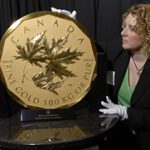Minting counterfeit coins is difficult to do in the US without attracting attention. In many cases, scammers will buy “replicas” from foreign factories that can produce coins to custom specifications – either to look more accurate or to pass common assaying methods. For example, a fake bullion coin with thick enough plating can easily pass a scratch test.
As counterfeiters become more skilled and savvy, it’s more important than ever to ensure authenticity before purchasing collectible coins. Private collectors aren’t the only ones who need to be careful – scammers are bold enough to try and sell knock-off coins to pawn shops that may not know how to find the minute differences.
Fortunately, there are many tools and tests you can use to help verify the authenticity of coins, which we’ve outlined in the infographic below. But perhaps the best advice is a saying we heard from a customer in our shop, “If you don’t know coins, you better know your seller.” Whether you are buying coins or any other type of collectible, a reputable dealer should guarantee what they sell you and stand behind it if there is a problem.












